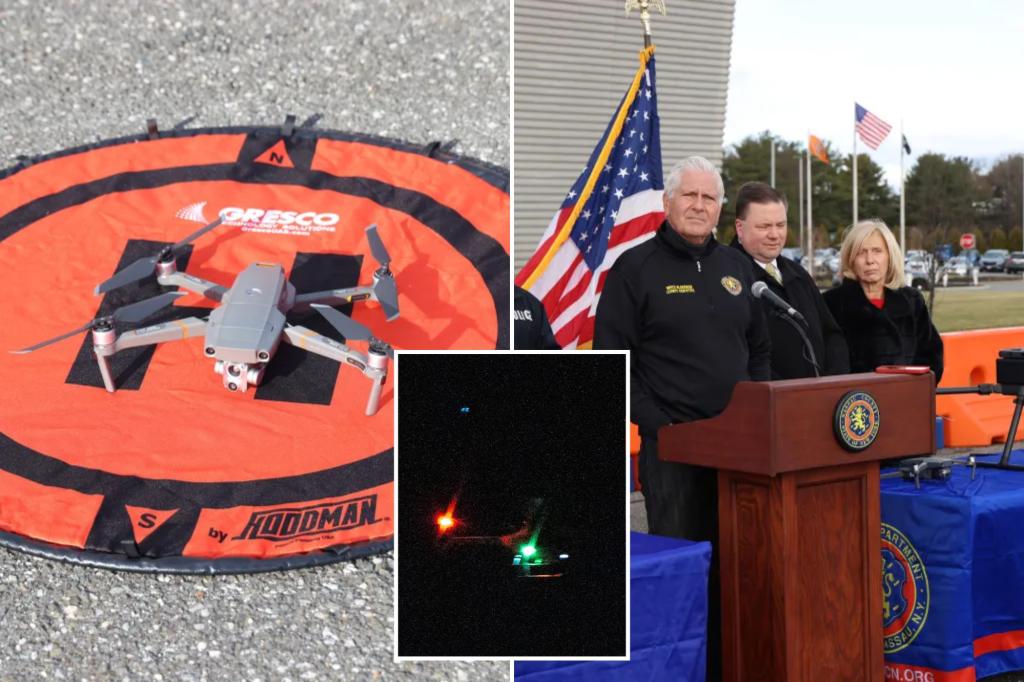The emergence of unauthorized drone activity has prompted Nassau County officials to take proactive measures, including authorizing police officers to shoot down drones deemed a threat to public safety. This decision stems from growing concerns over the increasing number of drone sightings, particularly near sensitive areas such as military installations, and the perceived lack of adequate federal response to address the issue. The county’s newly established drone command center provides enhanced tracking capabilities, allowing officials to monitor drones from a considerable distance. However, without federal approval and access to advanced interception technology, their ability to neutralize these potential threats remains limited.
Nassau County Executive Bruce Blakeman emphasized the urgency of the situation, stating that the county cannot afford to wait for a potential disaster to occur before taking decisive action. He expressed full support for the police department’s authority to shoot down drones posing a threat at mass gatherings or other public events. Police Commissioner Patrick Ryder affirmed the readiness of his highly trained sniper team to execute this measure if necessary. The recent temporary ban on drone operations over parts of New Jersey by the Federal Aviation Administration, along with its authorization of deadly force to down drones, underscores the heightened security concerns surrounding these unmanned aircraft.
The reported drone sightings, concentrated over New Jersey and parts of New York, have fueled speculation about their origin and purpose. Some officials suspect foreign involvement, particularly given reports of sightings near military installations with proximity to properties owned by foreign entities. These concerns are further amplified by the perceived inadequacy of the federal government’s response to investigate and address these incidents. While the White House has downplayed the concerns, local residents and government officials continue to demand answers and concrete action to mitigate the potential risks posed by these unidentified flying objects.
Nassau County’s new drone command center represents a significant step towards enhancing local monitoring capabilities. However, the county’s ability to effectively counteract drone threats remains constrained by the lack of access to advanced interception technology, which requires federal approval. While police officers are authorized to shoot down drones as a last resort, this approach presents potential safety risks to individuals on the ground. County officials are advocating for federal legislation that would grant them access to technology enabling them to jam drone signals and send them back to their origin, thereby avoiding the need for potentially hazardous measures like shooting them down.
The primary concern for Nassau County officials is not merely the presence of drones but the uncertainty surrounding their purpose and the potential for them to be used for malicious activities. The perceived lack of a robust federal response has left local officials feeling compelled to take matters into their own hands. They are urging the federal government to expedite the approval process for the necessary interception technology and to provide clearer guidelines on how local jurisdictions should handle unidentified drones. The recent FAA actions, including the temporary flight ban and the authorization of deadly force, suggest a growing awareness of the potential threats posed by these aircraft, but local officials are pushing for more proactive and comprehensive measures.
The situation in Nassau County highlights the complex challenges posed by the increasing prevalence of drones and the evolving need for effective regulations and enforcement mechanisms. While local authorities are taking steps to protect their communities, they are ultimately reliant on federal support to acquire the necessary technology and legal frameworks to address this emerging threat effectively. The ongoing debate underscores the delicate balance between ensuring public safety and respecting individual privacy rights, as well as the need for collaboration between federal, state, and local agencies to navigate the rapidly changing landscape of unmanned aircraft systems.


